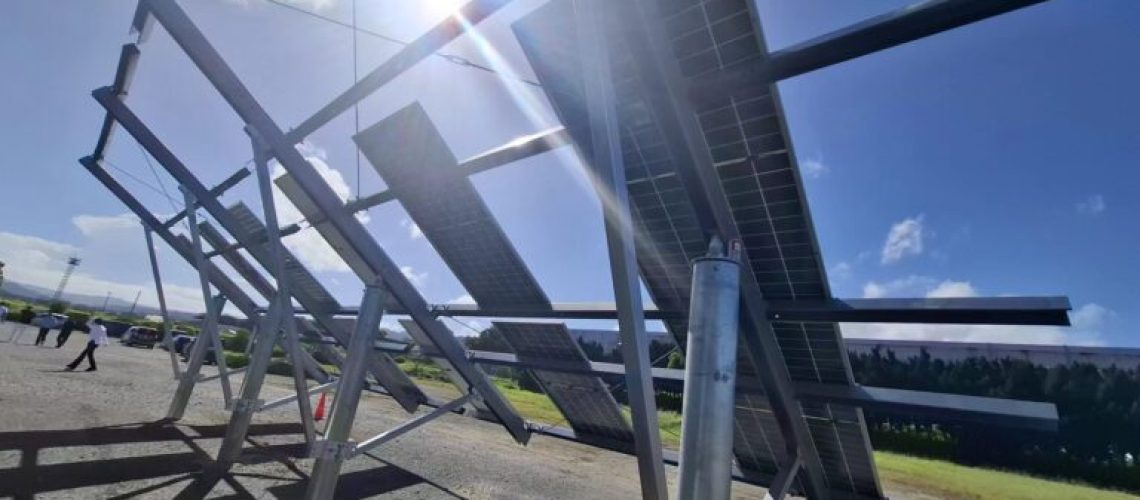JinkoSolar and Trina Solar have separately reported that on-field testing shows tunnel oxide passivated contact (TOPCon) solar modules outperform p-type back-contact PV modules in monthly power generation.
From pv magazine Global
Chinese solar module manufacturers JinkoSolar and Trina Solar have each published white papers this week that demonstrate their TOPCon panel technologies offer superior power yield compared to back-contact (BC) module technologies.
In its case study, JinkoSolar explained that testing took place at its facility in Kagoshima, Japan, from Sept. 12 to Oct. 11, with the results confirmed by Germany’s TÜV Nord.
“The TOPCon product showed an average energy yield of 2.22% and up to 6.95% higher than its p-type back-contact counterpart,” the company said in a statement. “In the past few months, the photovoltaic industry has debated over the technical route of xBC technologies. The manufacturers promised more rated power and front-side efficiency because there is no grid line on the front of the product. And as they make their way into some pilot projects, we can see how these claims play out in the field under various climate conditions.”
The test involved three modules: a 575 W dual-glass n-type TOPCon module from JinkoSolar, a 580 W dual-glass p-type back-contact (BC) module, and a 605 W single-glass n-type BC module. The identities of the two BC module manufacturers were not disclosed. All modules were installed at a 20-degree tilt angle and 1 meter above the ground.
Using a CR1000X system, JinkoSolar’s experts found that the TOPCon module generated 136.86 kWh/kW, while the p-type BC produced 133.87 kWh/kW and the n-type BC yielded 129.98 kWh/kW.
“Thanks to its higher bifaciality and lower temperature coefficient, when normalized based on each module power rating, the module achieved a yield 2.22% higher than p-type BC and 5.29% higher than n-type BC,” JinkoSolar said. “In sunny and cloudy days during the period, TOPCon modules energy yield consistently remains 2% to 3% higher than p-type BC modules and 5% to 6% higher than n-type BC modules.”
The TOPCon module reportedly achieved the highest performance ratio among the three products.
“TÜV Nord measured a 94.19% performance ratio for the TOPCon module, with the other two trailing slightly behind, 91.99% for p-type BC and 89.29% for n-type BC,” the white paper notes.
In a separate report, Trina Solar noted that its TOPCon modules provide an average power generation gain of 3.15% per watt over XBC modules, with a relative monthly gain of up to 3.4%.
The company conducted its measurements at its testing field in Changzhou, Jiangsu province, China, from July 16 to Sept. 10. It compared the performance of its TOPCon Vertex N 600 W bifacial dual-glass modules with 620 W bifacial dual-glass TBC modules from an unnamed supplier.
The panels were mounted at a 23-degree tilt angle on cement ground with approximately 30% reflectivity, positioned 0.5 meters above the ground. An IV-tracker collected power generation data.
“TOPCon modules were proven significantly superior in low-irradiance conditions such as early morning and late evening, after an analysis of power generation data at different times of the day,” Trina Solar stated. “From 7 a.m. to 8 a.m., TOPCon’s power generation per watt was 6.9% higher than that of TBC, and from 5 p.m. to 7 p.m. the relative gain was 8.3% to 8.4%. This result is in line with earlier field tests showing that TOPCon modules outperform back contact technologies by about 5% in low-irradiance conditions.”
The company also said that TOPCon’s higher bifaciality is the key factor for its “superior” power generation. “TOPCon modules demonstrate a 2.6% power generation advantage over TBC modules, even at midday, when sunlight is strongest, which can be attributed to their bifaciality,” it said. “These findings are consistent with results from both the National Photovoltaic and Energy Storage Experimental Platform and National Centre of Inspection on Solar Photovoltaic Products Quality.”



